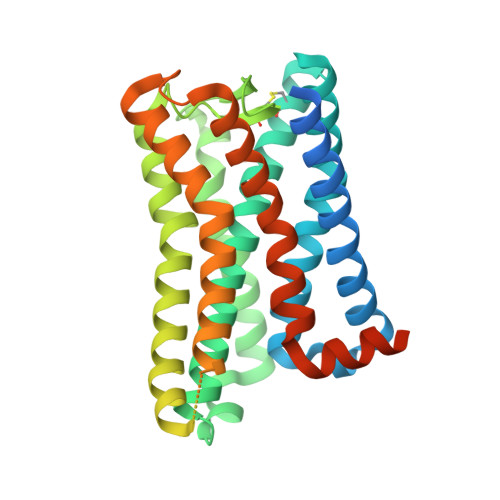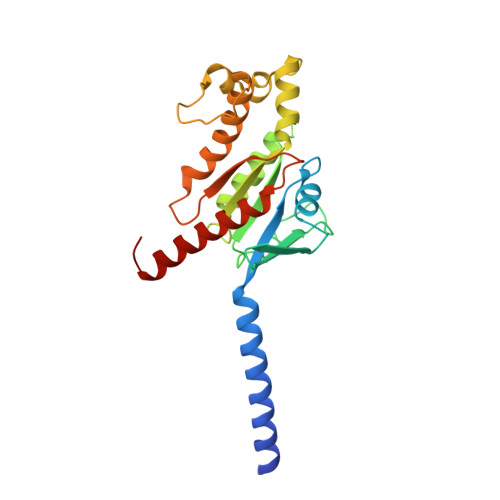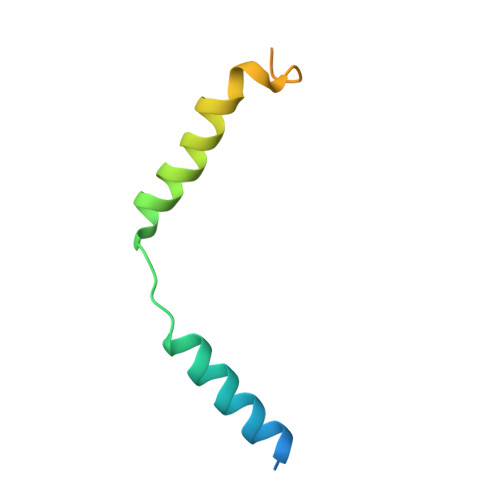Specific binding of GPR174 by endogenous lysophosphatidylserine leads to high constitutive G s signaling.
Nie, Y., Qiu, Z., Chen, S., Chen, Z., Song, X., Ma, Y., Huang, N., Cyster, J.G., Zheng, S.(2023) Nat Commun 14: 5901-5901
- PubMed: 37737235
- DOI: https://doi.org/10.1038/s41467-023-41654-3
- Primary Citation of Related Structures:
8KGK, 8KH4, 8KH5 - PubMed Abstract:
Many orphan G protein-coupled receptors (GPCRs) remain understudied because their endogenous ligands are unknown. Here, we show that a group of class A/rhodopsin-like orphan GPCRs including GPR61, GPR161 and GPR174 increase the cAMP level similarly to fully activated D1 dopamine receptor (D1R). We report cryo-electron microscopy structures of the GPR61‒G s , GPR161‒G s and GPR174‒G s complexes without any exogenous ligands. The GPR174 structure reveals that endogenous lysophosphatidylserine (lysoPS) is copurified. While GPR174 fails to respond to exogenous lysoPS, likely owing to its maximal activation by the endogenous ligand, GPR174 mutants with lower ligand binding affinities can be specifically activated by lysoPS but not other lipids, in a dose-dependent manner. Moreover, GPR174 adopts a non-canonical G s coupling mode. The structures of GPR161 and GPR61 reveal that the second extracellular loop (ECL2) penetrates into the orthosteric pocket, possibly contributing to constitutive activity. Our work definitively confirms lysoPS as an endogenous GPR174 ligand and suggests that high constitutive activity of some orphan GPCRs could be accounted for by their having naturally abundant ligands.
- College of Life Sciences, Beijing Normal University, 100875, Beijing, China.
Organizational Affiliation:





















